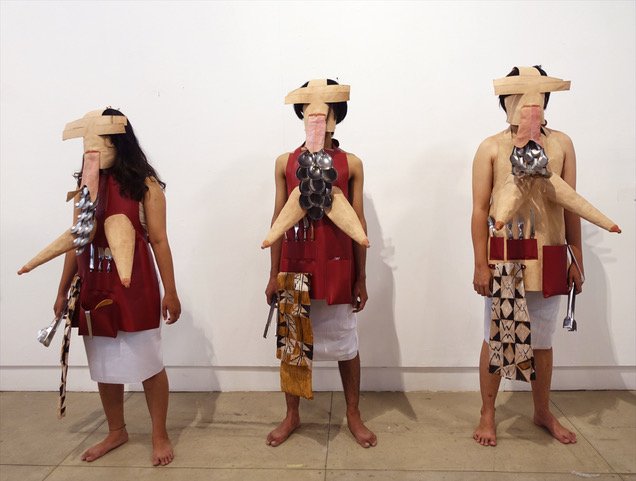
Body Shelters
In Jaarsma’s work Rakus (2018), the garments take on the iconography of the figure of Rangda, the demon queen of Balinese mythology. Rangda, who represents the battle between good and evil, often appears in the Barong dance as a naked old woman with pendulous breasts and a long, protruding tongue.
The word “rakus” means greed. The work was born out of the artist’s frustration with existing power structures in Indonesia. Sticking out ones tongue as a facial gesture suggests exasperation, a feeling of frustration. Rakus is about greed and corruption exercised by those in power and the continuous social and economic exploitation that started with the Dutch colonialization in the 1600s. It is also a commentary on the erosion of tradition and ancestral knowledge.
The work Wearing the Horizontal (2020), relates to the fragility of life and investigates our relationship with death as part of the cycle of life. Inspired by the ephemeral nature of the “Lamak”, woven mats from palm leaves that are used to decorate altars and shires of Hindu temples in Bali, Mella created horizontal dresses. While these are impossible to wear, they are meant to remind us of our limits and help us accept the finite nature of our existence.
The horizontal dresses are made from bark cloth. Bark cloth is a non-loomed fabric that carries a rich account of Indonesian history and was first used in some parts of the Indonesian archipelago some 4000 years ago. However, this tradition of textile making is fast disappearing in as a result of efforts to “modernize” the country.







